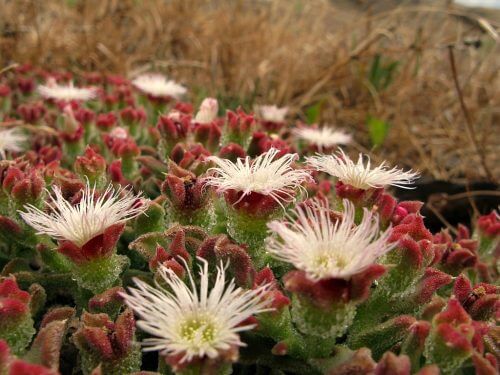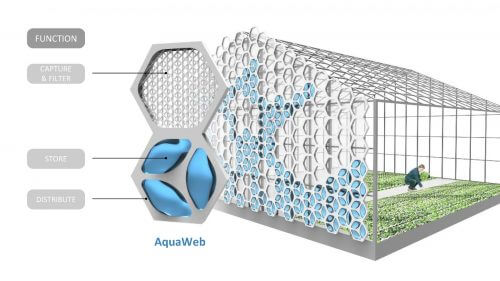Company Nextloop Developed a biomimetic system for harvesting, storing, and distributing water, and won first place in the prestigious Ray Anderson Award

By: Yael Halfman Cohen
By 2050, 9 billion people will live on the planet, 70% of them will live in cities. Making cities more resilient to climate change is a significant need today. The demand for food and water solutions in cities is increasing due to population growth and climate challenges. The American Biomimicry Institute announced a global design challenge (Biomimicry Global Design Challenge) in the field of climate change. The competition is held in cooperation with the Ray Anderson Foundation and offers a prize of $100,000 to the first place winner, a prize known as the Hope Prize. The leading groups even receive an acceleration program (accelerator) to promote and commercialize the ideas (the late Ray Anderson was the founder of the company Interface and is recognized as leading the standard of sustainability in the industry. Link on his work).
In October 2017, it was announced that the winners of the award for 2017 are the Nextloop team, an international team that developed a biomimetic system for harvesting, storing, and distributing water. The team includes an architect residing in Germany, a biomimicry expert from Croatia, and an urban agriculture expert from New York. The development included interdisciplinary research in the fields of architecture, agriculture and material. The team actually met for the first time as a full team face-to-face at the time of receiving the award, and worked on the system for about two years online.
The team decided to focus on the food sector and identified the problem of water accessibility in an urban environment as a means of developing sustainable urban agriculture. The biomimetic solution developed is the Aquaweb system, which is designed to help urban food producers collect, filter, store and distribute available water sources, including rainwater and moisture from the air, in one modular system that responds to the aforementioned variety of functions. The system utilizes available fog and rainwater and uses passive water distribution strategies. In the first phase, the system is intended for urban and domestic farms, for vertical gardening, or for gardening in containers, and offers an energy-efficient solution.
The system was designed according to the biomimicry methodology. In fact every functional aspect of the system was designed inspired by another organism:
- Collecting the water - inspired by the spider weaving webs that harvest mist from the air.
- Water storage - inspired by plants living in dry habitats such as drought-resistant succulents
- The distribution of water - inspired by mycorrhizal fungus (symbiotic mutualism between the mycelium of the fungus and the roots of the plant)
- Modularity - inspired by the honeycomb hexagonal structure as a basis for efficient modular design and adaptation to changing needs. Each module in the system is designed as a hexagon, the number of hexagons can be adjusted according to the need and the given area.

The team of judges in the competition praised the use of local resources for solutions in the field of agriculture, the energy efficiency of the system, and the fact that it is not centralized. Also, it was noted to praise the systematic planning process in which at every step of the solution there was observation and learning from another organism. "The result is functional, aesthetic, and resistant, and a beautiful example of renewable biomimetic planning", according to the judges.
After winning, the team will advance to the stage of developing and proving the design concept. The team will collect data as part of a preliminary study (pilot) aimed at evaluating the function of the system in different types of climates, including arid regions such as Hawaii, Morocco and Africa. The team will also research and learn how different types of materials and fabrics will affect the efficiency of water collection. During a simulation in which water was sprayed on the system, the system captured about 50%, or about 2000 milliliters per square meter of fog. At this stage the system can store about 5 liters of water per unit.
Additional applications for the system can be thought of, for example a system for roofs of houses to increase the harvesting of rainwater, its storage and use, a system integrated into building envelopes, greenhouses, and more. The goal is to make minimal changes to the design and material in order to allow a wide variety of applications. Successfully !
- Source of knowledge
- A new cycle of the competition (Biomimicry global design challenge) is open for registration - Link
